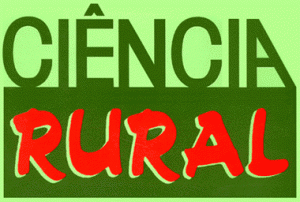By Clovis Arruda Souza, professor titular da UDESC, Lages, SC, Brazil
The study “Cropping systems on root rot and soybean seed yield” published in the journal Ciência Rural (Vol. 48, No. 7), in order to understand the relationship between different crop systems and soybean yield, the researchers quantified the incidence of root rot in four systems: soybean-oat+ soybean-oat, soybean-maize + soybean-maize, soybean-wheat + soybean-wheat and soybean-pasture + soybean-pasture. The experiments were carried out in a soybean crop cultivated in the region of Ponte Serrada, in Santa Catarina, by two agricultural crops. In submitting the data to the Pearson correlation and the Duncan’s test of means, the researchers found an incidence of over 50% of root rot in the mean of the systems. Of these, the soybean+pasture system presented the least productive, with negative impact of root rot.
In Brazil, Costamilan, et al. (1999) identified surviving fungi in cover crops and in remains of soybean after harvest; and, Reis, et al. (2014) pointed out that there is a negative relationship between the incidence of root rots with soybean yield. Outside of Brazil, Perez-Brandan, et al. (2014) found that intensive soybean cultivation increases presence of soil fungi and consequently decreases soil health.
For the researcher Clovis Arruda Souza, the study presents interesting data on the losses of continuous soybean cultivation. “In practice, these data can be used for rural extension, in the sense of making farmers aware of the losses they are having when they carry out this type of crop, harvest season,” he says. The high incidence of root rot, pointed out by the study, shows clearly and objectively the real situation of the soybean cultivation system and shows that farmers do not actually perform crop rotation. The researcher also points out that root rot can not be combated by the application of agrochemicals. It would be necessary to reorient the management practices of these crops.
In Brazil, there is still little information on the actual incidence of root rot in soybean crop production and its impact on the productive aspects of this crop. This study advances in this direction and brings interesting contributions that can transform the practices of soybean cropping.
References
COSTAMILAN, L.M., et al. Sobrevivência de fungos necrotróficos em restos de cultura de soja, em sistema de plantio direto. Fitopatologia Brasileira. 1999, vol. 24, pp. 175-177.
PEREZ-BRANDAN, C., et al. Soybean fungal soil-borne diseases: a parameter for measuring the effect of agricultural intensification on soil health. Can J Microbiol [online]. 2014, vol. 60, no. 2, pp. 73-84, ISSN: 1480-3275. [viewed 10 October 2018]. DOI: 10.1139/cjm-2013-0792. Available from: https://www.ncbi.nlm.nih.gov/pubmed/24498984
REIS, E.M., et al. Efeitos da rotação de culturas na incidência de podridões radiciais e na produtividade da soja. Summa phytopathol [online]. 2014, vol. 40, no. 1, pp. 9-15, ISSN: 0100-5405 [viewed 10 October 2018]. DOI: 10.1590/S0100-54052014000100001. Available from: http://ref.scielo.org/tvh3hw
To read the article, access it
MAIER, M., SOUZA, C.A. and CASA, R.T. Cropping systems on root rot and soybean seed yield. Cienc. Rural [online]. 2018, vol. 48, no. 7, e20170460, ISSN: 0103-8478 [viewed 10 October 2018]. DOI: 10.1590/0103-8478cr20170460. Available from: http://ref.scielo.org/9j5tqz
External link
Ciência Rural – CR: <http://www.scielo.br/cr>
Como citar este post [ISO 690/2010]:













Recent Comments